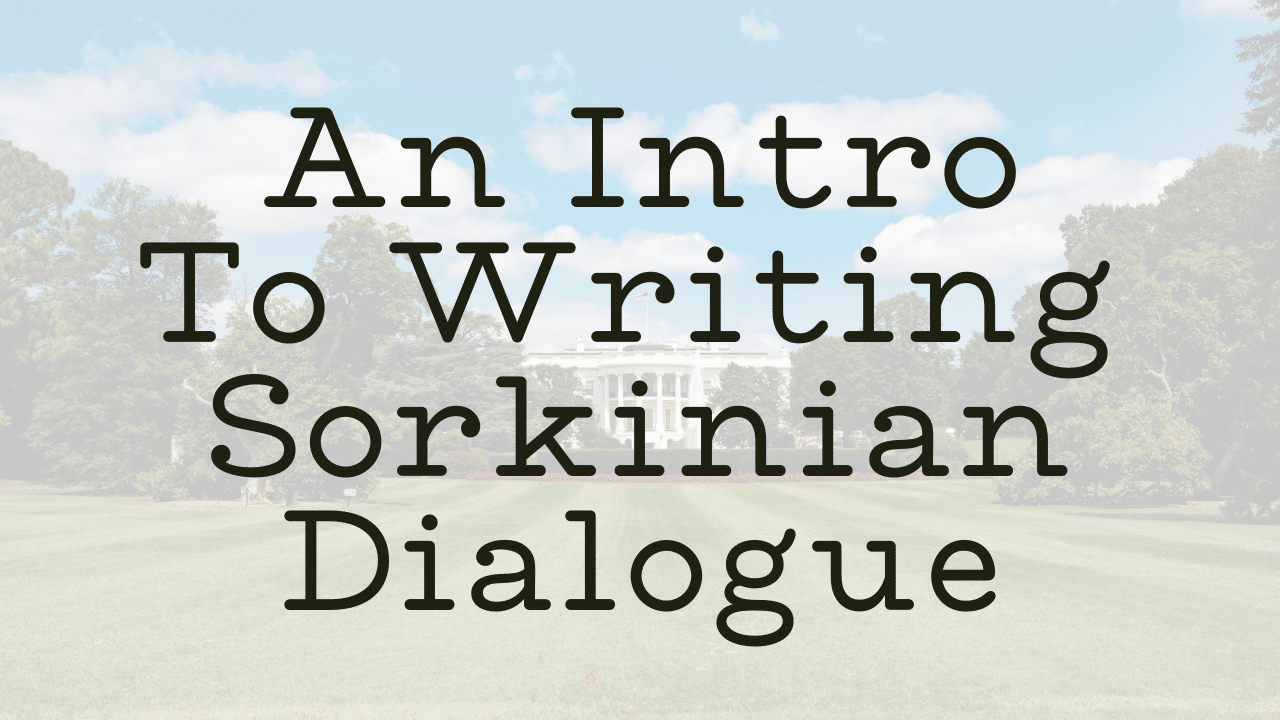As an Amazon Associate I earn from qualifying purchases.
Written by JJ Barnes

Aaron Sorkin’s dialogue is widely respected as some of the best writing in film and television. If you’re unfamiliar with his work, he’s an American writer. He’s best known for screenwriting TV shows such as The West Wing and The Newsroom, and films such as The Social Network and A Few Good Men. He also wrote stage adaptations such as To Kill A Mockingbird and A Few Good Men, which went to Broadway. Aaron Sorkin is an exceptional writer in all ways, and worth studying in general. But today I’m going to be focusing on the way he writes dialogue.
Aaron Sorkin Writes Dialogue Heavy Scenes
Aaron Sorkin writes fast spoken, dialogue heavy scenes. He also writes in a very clever and skillful way. Aaron Sorkin’s dialogue brings the scene alive in a rich and exciting way.
Because his style is dense with skills you could learn from, I’m going to be doing an introduction because I think entire books could be written on the subject.
Characters All Motivated To Talk
Imagine a scene with four characters in. You have your main plotline which is what the focus of that scene will be on. It’s what the characters will be concentrating their energy on. Aaron Sorkin’s dialogue gives each character in that scene their own pressing subject they want to talk about. Then they compete with the other characters to discuss it.

Create a battle of wills between which conversation line becomes dominant. If you have equally driven characters who are all the protagonist of their own story you force scene level conflict into that moment in a really intense way. You also get a lot of character development. Who they are as people comes through in what it is they care about, and how they choose to try and win that conversation battle.
I always advise that every character is a protagonist in their own right. They will all be motivated to achieve their story goals, but these goals will often be peripheral to the main storyline. You’ll be riding on the shoulders of your protagonist. The story will follow them and their goals. The other characters will be doing things and being interesting, but mostly you focus on your protagonist.
What Aaron Sorkin’s dialogue style does is crash everybody else’s story and goals into the protagonist. There’s constantly multiple main storylines and multiple conversations happening within one scene and one conversation.
Aaron Sorkin’s Dialogue Is Dynamic

Dialogue heavy scenes can be quite flat. The protagonist is looking for something, and the other characters can either help or not. If the scene is focussed on conversation not action, that can be about as far as the scene gets.
You can supercharge the scene with competing goals and equally motivated characters all talking about their issues at the same time. As well fighting for their own corner, they’ll be engaging in the main conversation. This keeps your scene active and full of conflict.
You need to show the conversation is hopping between different points and different characters. However, you need to maintain a cohesive continuity. Your audience needs to understand what’s going on, and the protagonist still needs the conversation they set out to have.
Multiple Conversation Points
In Aaron Sorkin’s dialogue you’ll find that a lot of the time the characters don’t just have one thing they want to talk about. They’re actually carrying multiple subjects that are pressing on them to discuss. They will be focussing on the one that matters most to them in that moment, but have other things on their minds that they want to discuss. These conflicting topics will creep into the conversation and into how they talk to one another.
Aaron Sorkin’s dialogue will often have 3 characters wanting to discuss something series, and a 4th something absurd. The West Wing is about American politics, so there’s no shortage of important and serious issues that the characters can be motivated to discuss. However, the fourth character will have equal urgency and passion as the serious subjects, but the contrast is extremely funny.
Aaron Sorkin’s Dialogue Is A Tricky Technique, But Worth It
If you can master this technique, your characters will immediately become more relatable to your audience. Everybody is human and nobody is just a prop. Your scenes will also be more vibrant, more alive, and more exciting. It’s not easy and you need to be able to balance a lot of different things. You need to structure conversations around multiple plotlines and competing goals. It’s not easy, but if you can do it then it’s worth it.
More From JJ Barnes:
I am an author, filmmaker, artist and youtuber, and I am the creator and editor of The Table Read.
You can find links to all my work and social media on my website: www.jjbarnes.co.uk
Buy my books: www.sirenstories.co.uk/books
Follow me on Twitter: @JudieannRose
Amazon and the Amazon logo are trademarks of Amazon.com, Inc, or its affiliates.



[…] Give each character something they want that conflicts with what someone else wants. Or, like Aaron Sorkin, give each character multiple things they want that are in conflict not only with other characters […]